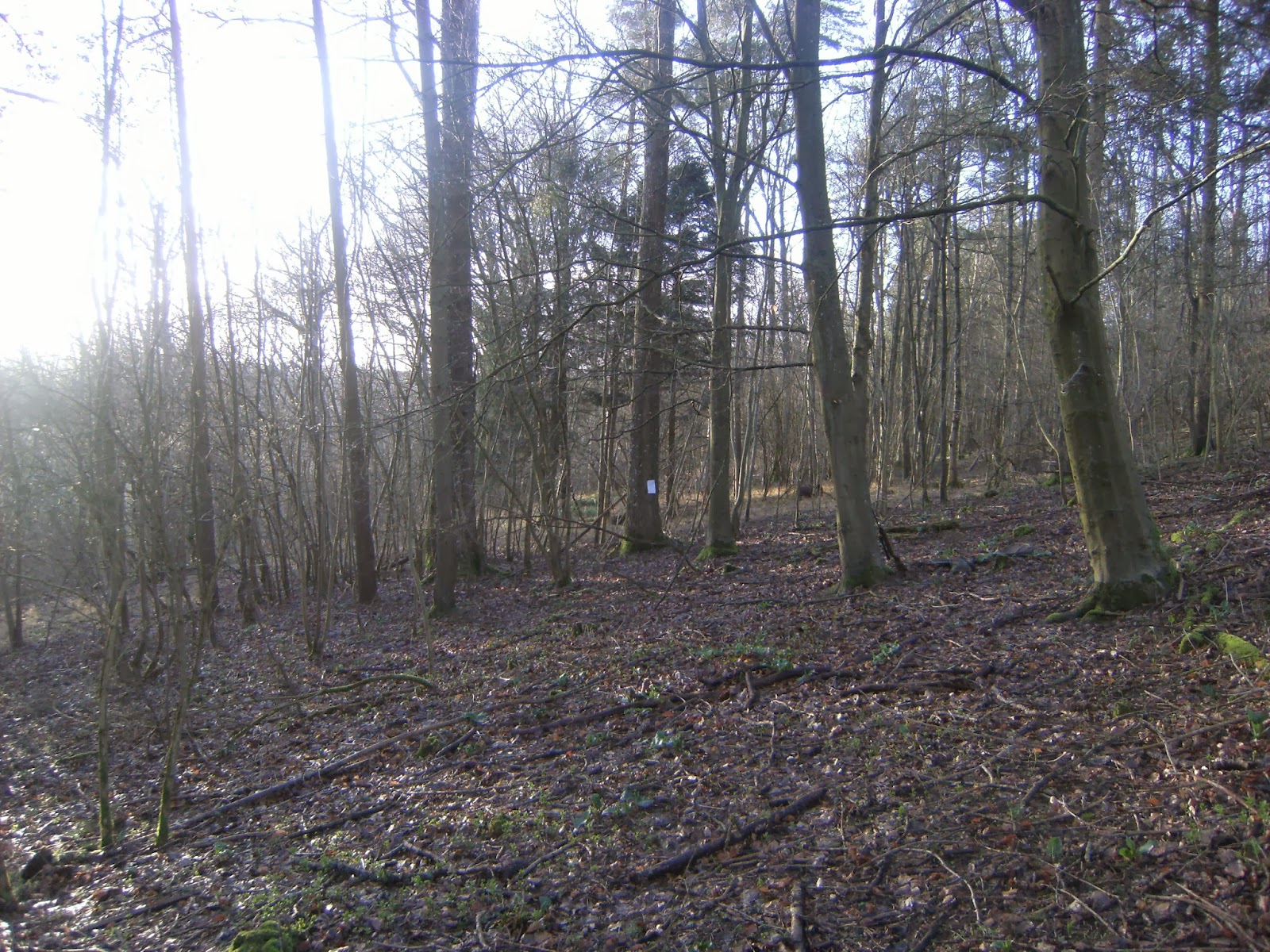The Webley Hawk with the two Relum springs fitted can put out 10 ft/lb with manageable recoil, however it did cause the 3-9x40 AGS scope to shift as the Hawke medium mounts needed fitting more securely. So with the screws tightened all the way up and the stop pin pressing tight down on top of the compression tube I took it down the woods for a test, i had also built a new bit of stock for the pump arm on the SMK B45-3 as the old one was too short and moved. So the multi pump could have a field test as well, it would be nice to see how well the open sights worked now the rear sight had been moved forward a bit.
 |
| Webley and Scott Hawk Mk II and SMK B45-3 multi pump, both in .177. |
I sighted the scope at a little over 10 yards, then moved back to a tree a little over 30 yards away and resighted. My shooting position was sitting with my back against the tree with the rifle supported on my fore arm which was wrapped around my knees, this is quite comfortable and the rifle is nearly as stable as it would be in a rifle rest. I have found that i had to concentrate on my breathing in this position, and my heartbeat can effect the shot a little as the rifle is rested against my shoulder no matter how lightly.
 |
| A4 target paper on a tree 30 yards away. |
Changing the target paper i then shot groups of 8 or 10 shots, and though the sun did interfere with the scope a little the groups were generally about an inch and a bit with .177 RWS Superdomes.
 |
| Not the best 8 shot group of the day, but most the groups were similar to this. |
The scope did shift a little but stopped and the only spread in the groups were from left to right, which i would put down to the sun shine in my scope and a slight side wind. All in all the Webley Hawk Mk II with the .177 barrel would appear to be a capable hunting rifle out to 30 yards at least, maybe a bit further once i got to grips with it's hold over and any side wind.
 |
| SMK with the original stock and pump handle. |
Happy with the Hawk i started on the open sights on the SMK B45-3 .177 multi pump, the rear sight had been moved forward and the square notch and post were a tight fit and proved to give good accuracy. I love this air rifle because it is so accurate with a scope fitted, it can give ragged hole groups out to 40 yards at times and that was with the old stock.
 |
| SMK with new stock Mk I, the bend in the pump arm is exposed. |
Making a new stock for it made it feel more comfortable to shoot as the combe held my head at the perfect height for the scope, But the stock on the pump arm was a bit short. So i built a new longer piece with the last of the wood i used to build it, which made the pump arm a lot more stable and secure.
 |
| SMK with new stock Mk II, does it really look like i want an Air Arms s410? |
Happy with both air rifles i spent the rest of the afternoon shooting both of them at a hole in a steel drum some 40 yards away, i moved a bit closer for the multi pump as i couldn't see the hole without a scope from 40 or 30 yards.
 |
| Well it looks like i did want an s410 after all. |
I must have put half a tin of Superdomes through the Hawk and nearly all went through the 1 1/2 inch wide hole, those that hit the drum still had plenty of energy and splatted flat against the metal.
 |
| A couple of mullered .177 Superdomes from 40/45 yards down range, these were hard to find as most were on target and passed through the hole. |
It would be nice to get the other .22 barrel for the Hawk now the power plant is working well, also i reckon fixing the stock so its more like the Mk I and earlier Mk II and a reblue would not be wasted on this lovely 70's British springer.
TTFN
Wing Commander Sir Nigel Tetlington-Smythe






























